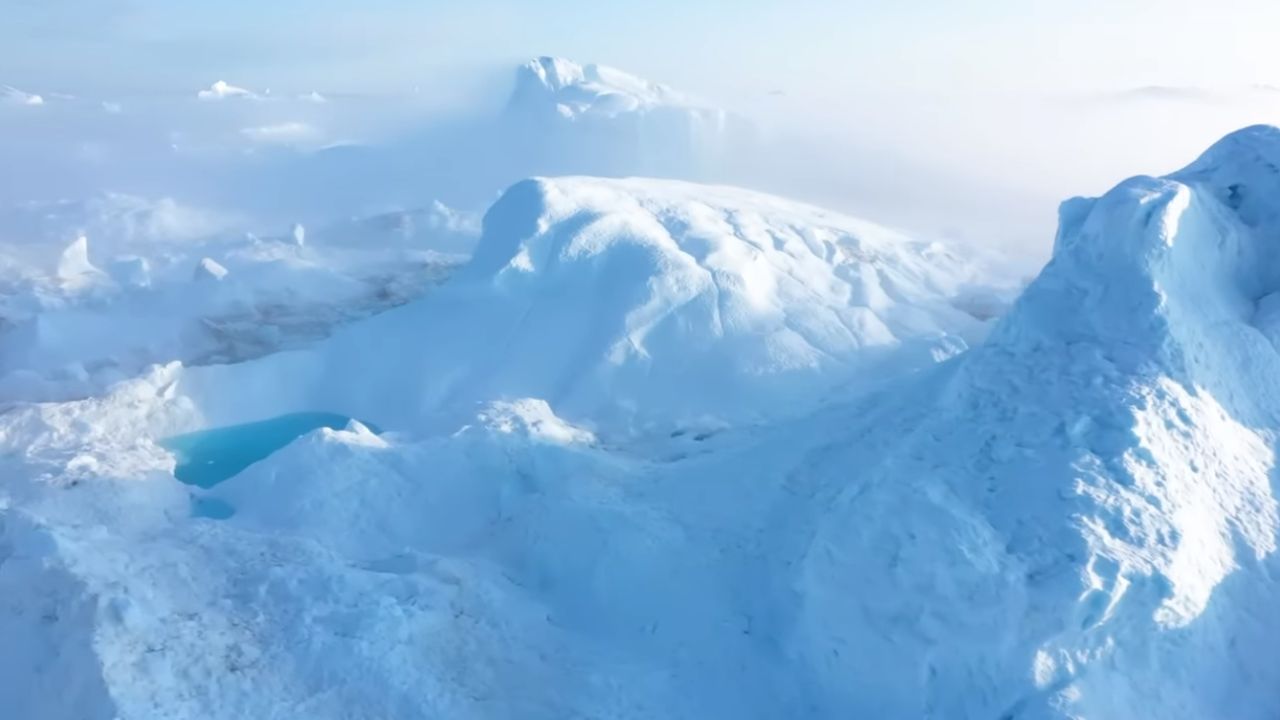A concerning new study published Tuesday found that warming ocean and air temperatures have caused ice shelves in North Greenland to lose over 35% of their total volume since 1978. This rapid melting could have dramatic impacts on sea level rise if it continues unabated.
Decades of Satellite Data Reveal Accelerated Decline
Analyzing thousands of satellite images since the late 1970s, researchers discovered the alarming scale of shrinking among North Greenland’s floating ice shelves, which act as bulwarks preventing land ice from slipping into the ocean.
In just the past two decades alone, the key Steenstrup glacier’s ice shelf collapsed by 66%. Three smaller shelves disappeared entirely over the study period.

This rapid disintegration results from heat absorbed by surrounding ocean waters melting the ice from beneath, which the study links directly to climate change and warming.
Fundamental Stability of the Region’s Glaciers at Risk
The ice shelves provide critical support to North Greenland’s glaciers, which contain enough ice to raise sea levels globally by around 7 feet if melted.
With the shelves thinning rapidly, researchers warn the whole glacier system could become unstable, triggering mass calving events that would flood the ocean with more icebergs.
Just the small fracturing caused by the melting has already accelerated ice discharge into the sea.
Melting ice shelves raise sea levels.
As climate change drives more intense melting of Greenland’s ice shelves and outlet glaciers, it flows into the ocean, elevating sea levels worldwide.
Between 2006 and 2018, the Greenland ice sheet accounted for over 17% of global sea level rise due to human-caused climate warming. That contribution is only growing.
The consequences of unchecked melting would be felt across densely populated coastal regions and island nations globally.
Ocean and air heating create a feedback loop.
The study notes distinct warming in surrounding ocean waters, likely driving increased basal melting of ice shelves from below.
At the same time, warmer air melts surface ice. This combined assault outstrips winter snow accumulation, dooming the shelves.
The resulting meltwater further warms the encircling sea, creating an escalating feedback loop of deteriorating ice.
Earth Poised for the Era of Accelerated Polar Melt
With experts forecasting record heat annually for the next five years, models suggest we’ve entered an imminent period of accelerated Arctic melt.
The North Greenland ice shelves’ drastic thinning provides a harbinger of the broader instability that could propagate across Greenland and Antarctica’s ice sheets in the coming decades.
Urgent climate action is needed to preserve these crucial glacial systems, keeping sea level rise contained. Their collapse would be catastrophic and irreversible.


















![10 Countries With the Best Healthcare in the World [Statistical Analysis] Countries With the Best Healthcare in the World](https://articleify.com/wp-content/uploads/2025/07/Countries-With-the-Best-Healthcare-in-the-World-1-150x150.jpg)










